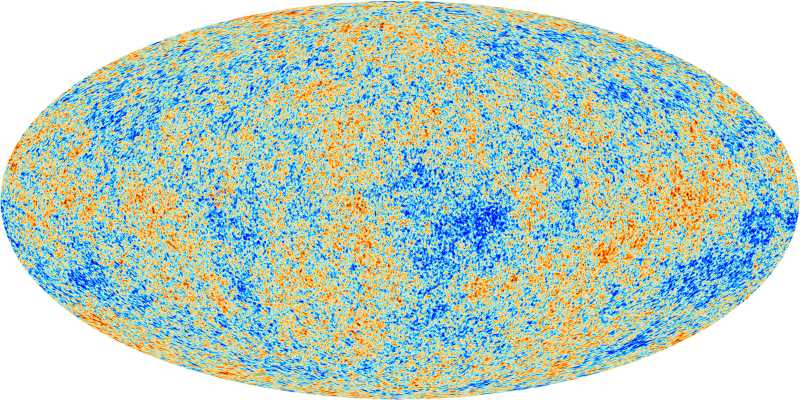A Close-Up of the Cosmic Microwave Background (CMB)
The radiation, known as the Cosmic Microwave Background, serves as the oldest electromagnetic diary entry from the universe. Discovered in 1965, the CMB offers an unparalleled look back in time, revealing clues about the universe's early conditions and large-scale structure.

In an epoch barely conceivable to the human mind, just one second after the cataclysmic expansion that gave birth to the universe. Temperatures soared to an astronomical ten billion degrees Kelvin, with densities reaching up to a staggering one hundred thousand grams per cubic centimeter. This early universe was a boiling cauldron of photons, neutrinos, positrons, electrons, protons, and neutrons. Although these rudimentary elements are familiar to us today, back then, they existed in a chaotic, roiling state. It was a time when matter and radiation were inseparably intertwined, each influencing the other in a dynamical ballet governed by the fundamental laws of physics.
As the universe continued to expand, a consequential cooling took place. Given that the electromagnetic radiation generated by photons is contingent upon the temperature, it too underwent a decline. Then, at approximately 300,000 years into its lifetime—a nanosecond in cosmic terms—the universe underwent a transformation, so critical yet so subtle, that it changed the course of cosmic history forever.
Now, with temperatures at about 3000 degrees Kelvin, electrons and protons coalesced into neutral hydrogen atoms for the first time. This catalyzed a fundamental change: the universe transitioned from an opaque fog into a transparent expanse. No longer scatter-prone, photons started to traverse the universe unencumbered. Imagine peering into a realm that was the radiation field equivalent of a red star. The universe, if viewed at that moment, would have presented a mesmerizing, red-hued panorama.
Fast-forward to our present era, and the universe has expanded by a factor of 1000. Correspondingly, the temperature of the cosmic radiation has plummeted by the same factor, settling near a chilly 3 degrees Kelvin. These remnant photons now predominantly reside in the radio wave portion of the electromagnetic spectrum. This ever-pervasive glow is what we refer to as the Cosmic Microwave Background (CMB) radiation, a relic echo of the universe's infantile state.

The Significance of Background Radiation
Discovered serendipitously in 1965 by Arno Penzias and Robert Wilson, this radiation would later earn them a Nobel Prize in 1978. The CMB is not just another celestial phenomenon; it is the oldest electromagnetic signal we have from the universe. It offers a view further back in time than any galaxy or quasar ever observed, originating from distances that transcend even those cosmic objects.
The implications of the CMB are revelatory for cosmology and theoretical physics. It serves as an invaluable framework for understanding the universe's large-scale structure and provides clues about its initial conditions. Models such as the Big Bang Theory and cosmic inflation gain robust empirical support from the precise measurements of this radiation. Furthermore, the CMB is a cornerstone for testing novel theories, including the elusive quest for a unified field theory that seeks to reconcile quantum mechanics with general relativity.
In this unimaginable voyage from an incandescent, dense primordial soup to the vast, frigid expanse we inhabit today, the CMB serves as an enduring touchstone—a spectral memoir if you will—of the universe's tumultuous infancy. It is as though the cosmos has been keeping a diary, and the CMB is its earliest entry, awaiting our intellectual scrutiny. As we continue to refine our techniques to interpret this ancient radiation, it serves as both a mirror and a window: a mirror reflecting the universe's chaotic youth, and a window through which we may glimpse its ultimate destiny.
By studying this faint yet omnipresent radiation, we do more than unearth the universe's antediluvian chronicles; we venture toward a greater, perhaps even complete, understanding of the cosmos. After all, in the whisper of these ancient photons lies the echo of creation itself.
In-Text Citation: ‘Evolución de La Composición Química Del Universo’. Revista de La Universidad de México, https://www.revistadelauniversidad.mx/articles/84f43983-4ac5-4e19-90ea-ecfafd73f26e/evolucion-de-la-composicion-quimica-del-universo. Accessed 14 Sept. 2023.




